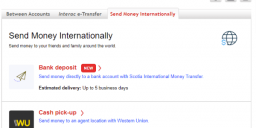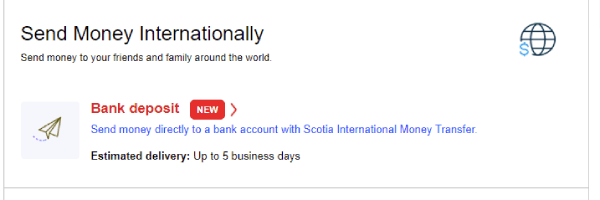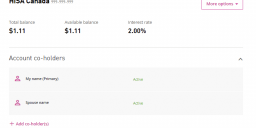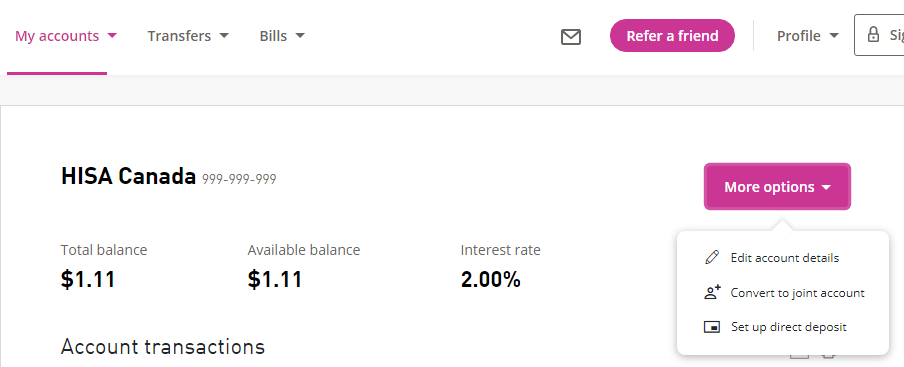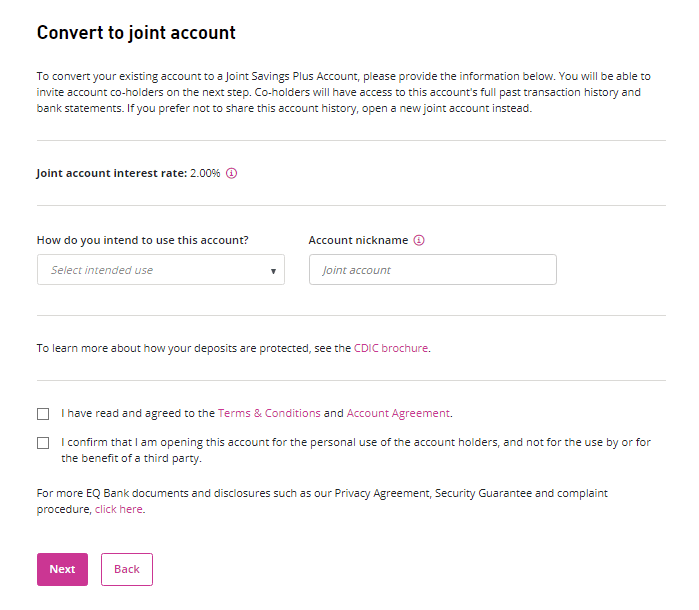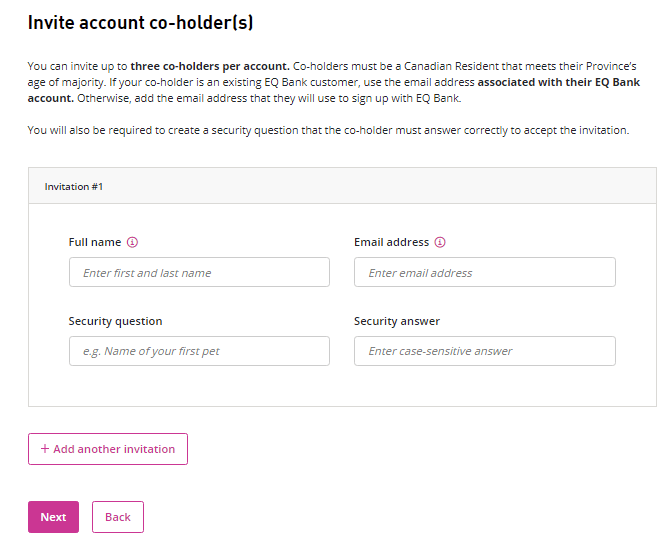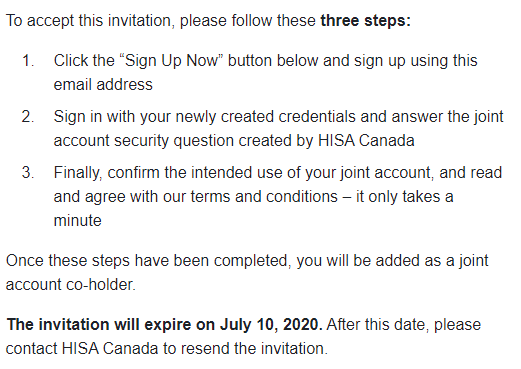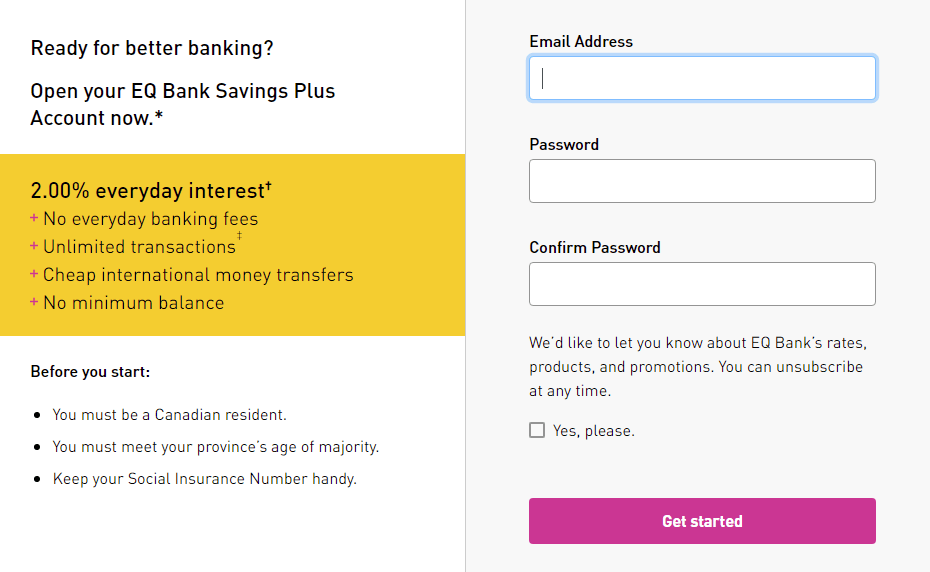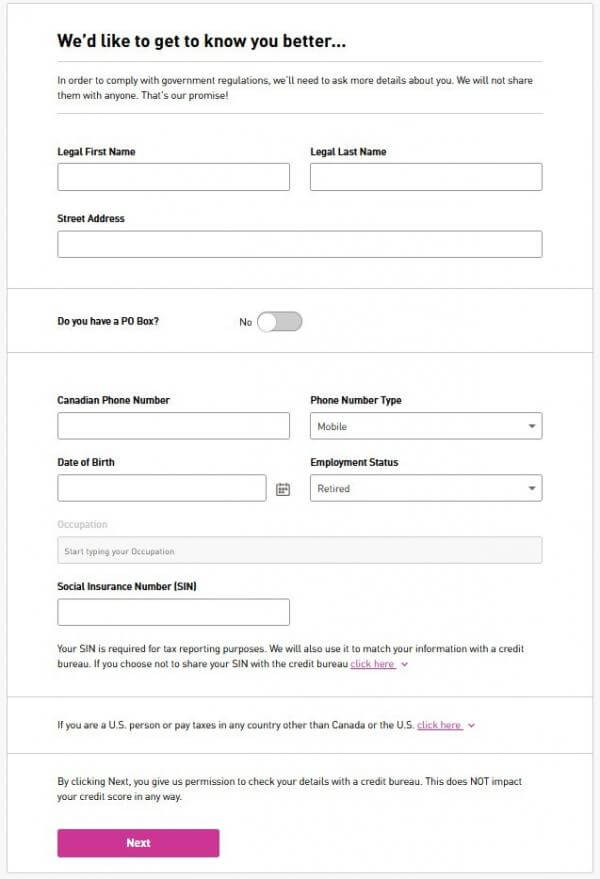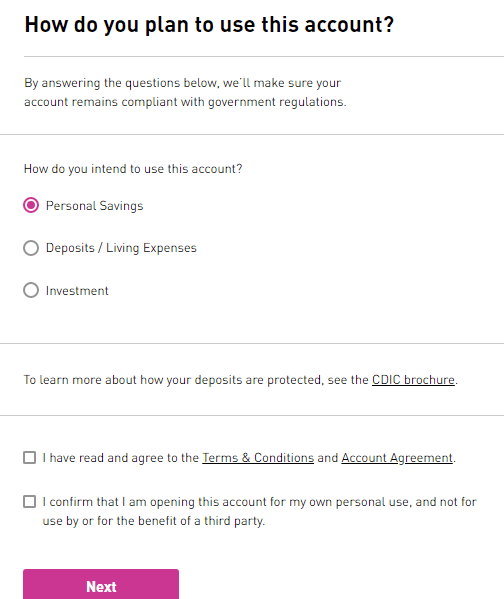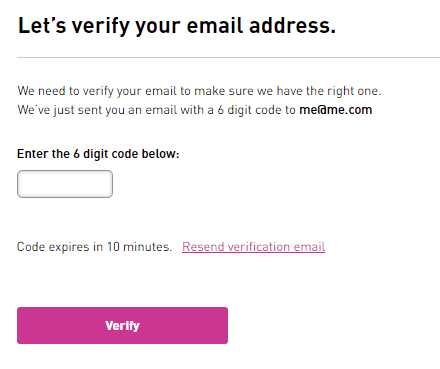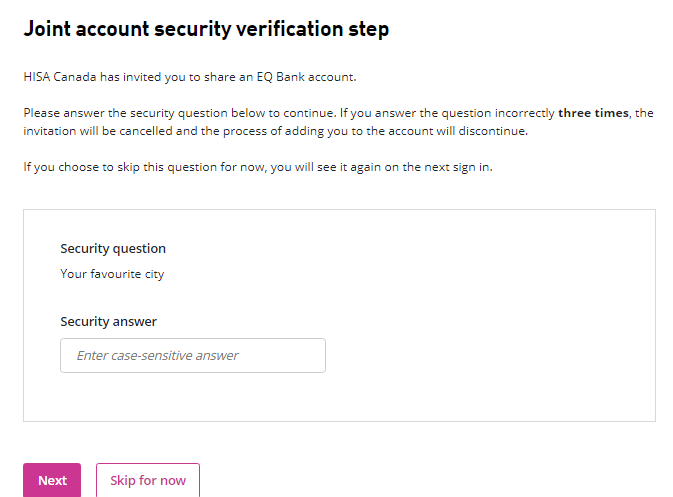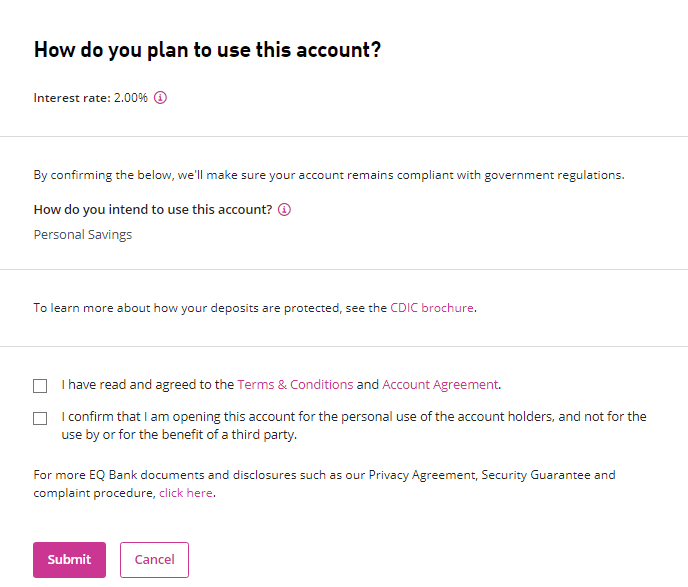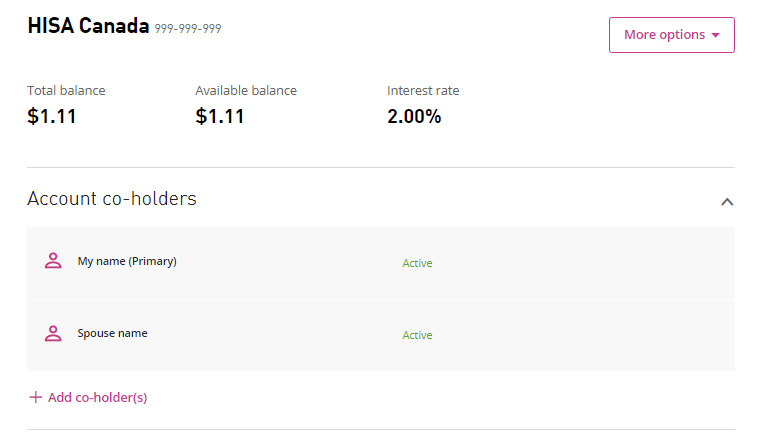I recently signed up for the Scotiabank Ultimate Package Chequing Account (see also this review) and noticed that it offers free Scotia International Money Transfers. I decided to dig in and see whether this is a worthwhile benefit for anybody who needs to send money internationally, especially compared to EQ Bank’s similar service that was announced at the end of 2019.
Convenience
Both Scotiabank and EQ Bank allow you to complete the entire process online, with an interface that’s built-in to your existing online banking interface.
Here is the Scotiabank online banking interface:
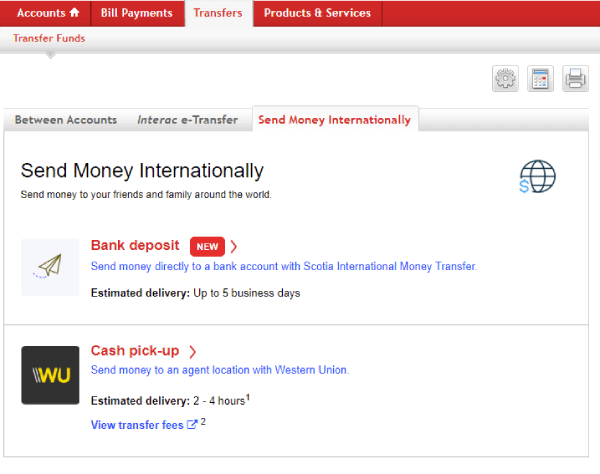
Here is the EQ Bank online banking interface:

This is certainly more convenient than sending a wire transfer or money order. EQ Bank’s international money transfer service is actually through a partnership with Wise (formerly TransferWise) and thus you must also sign up for a Wise account. This takes a bit more setup, but might be worth it in the end.
In either case, the transfer direct debits your Canadian bank account and then deposits the money in the destination account within a few business days.
Here is the interface to add a new recipient through Scotiabank:
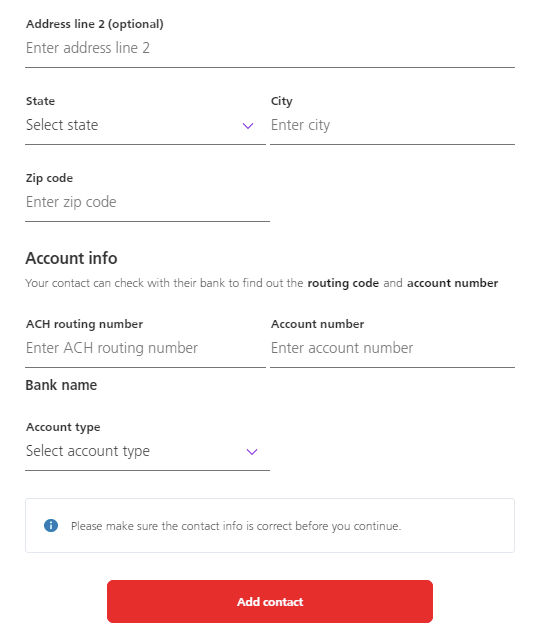
Scotiabank supports 18 destination countries. If you need to send money to a country that isn’t on their list, they suggest that you go through their partnership with Western Union, which would cost you a lot more in fees. Through its Wise partnership, EQ Bank supports 69 countries and regions (although that includes the volcanic island Jan Mayen, among other regions).
Fees
Whether through a spread on the exchange rate or a specific fee, every currency exchange or money transfer service makes money from you. And they’ll heavily advertise whichever route they’ve taken. In the end, you shouldn’t get distracted by this, because all that matters fee-wise is how much money reaches the destination.
Scotiabank does this through its exchange rate spread (which I calculated to be 2.0% for a CAD to USD transfer), while EQ Bank does this through fees. Note that if you don’t have a Scotiabank Ultimate Package chequing account, you end up also paying $1.99 per transfer (on top of the 2.0%).
I did some test CAD to USD transactions with Scotiabank and EQ Bank and compared the results against the mid-rate on XE.com, which was 0.76464 at the time. In other words, if you were to transfer $10,000 in Canadian dollars at the mid-rate, the recipient would get $7,646.64 in US dollars. Note that this is a baseline that you won’t actually get unless you find someone who wants to exchange exactly $7,646.64 USD in exchange for your $10,000 CAD.
For Scotiabank, I tested the amounts below. (Scotiabank allows you to transfer more than $9,500 CAD at a time, but EQ Bank’s limit is $9,500 per 24 hours, so I chose $9,500 for the highest amount.)
- Send $100 CAD, receive $74.96 USD
- Send $1,000 CAD, receive $749.60 USD
- Send $9,500 CAD, receive $7,121.20 USD
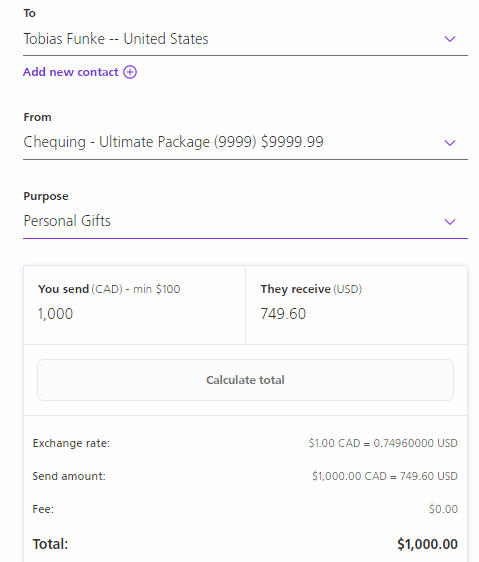
This is a 2.0% spread no matter how much you transfer: (0.76464 [mid-rate] – 0.7496 [Scotiabank rate]) / 0.76464 [mid-rate]
For EQ Bank, I tested these amounts:
- Send $100 CAD, receive $74.27 USD
- Send $1,000 CAD, receive $758.01 USD
- Send $9,500 CAD, receive $7,216.02 USD
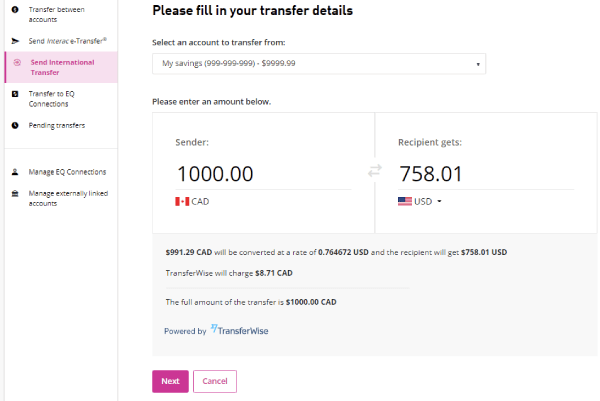
EQ Bank becomes cheaper pretty quickly — I calculated that at $130 CAD and above, you’d pay less in fees with EQ Bank. For amounts lower than $130 CAD, Scotiabank is cheaper. This is because EQ Bank / Wise charges you a fee consisting of a base fee (up to $3.02) + a fixed 0.65% spread on top of the mid-rate. EQ Bank and Wise advertise heavily that they charge you the mid-rate, but this is just a clever way to break down the fee.
Interestingly, using EQ Bank is slightly cheaper than using Wise alone. When you use Wise outside of EQ Bank, it charges you an additional payment fee depending on how you choose to fund the transfer (with a bill payment vs direct debit, for example).
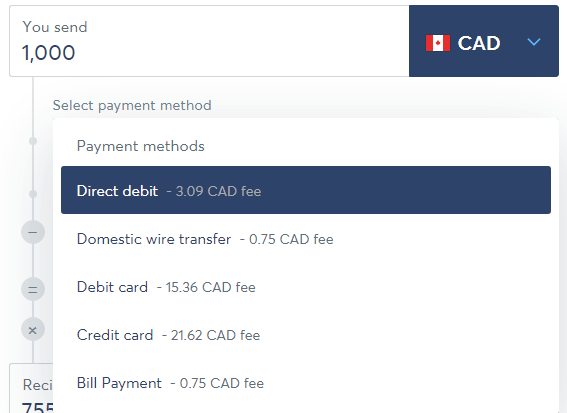
When you do the transfer through EQ Bank, there is no such additional fee.
I did not test other currencies, but I would expect the comparison to be similar, with Scotiabank better only for very small transfers. If you have a Scotiabank chequing account that charges you an additional $1.99, then EQ Bank will always work out cheaper.
Business transfers?
Note that for my small business, I use OFX for all foreign currency exchange — I’ve gotten by far the best rates there for higher frequency and higher dollar amount transfers.
